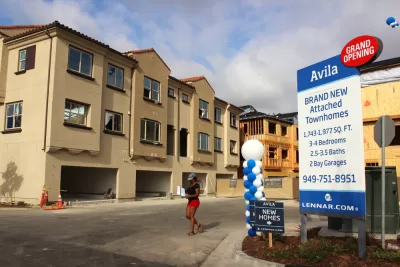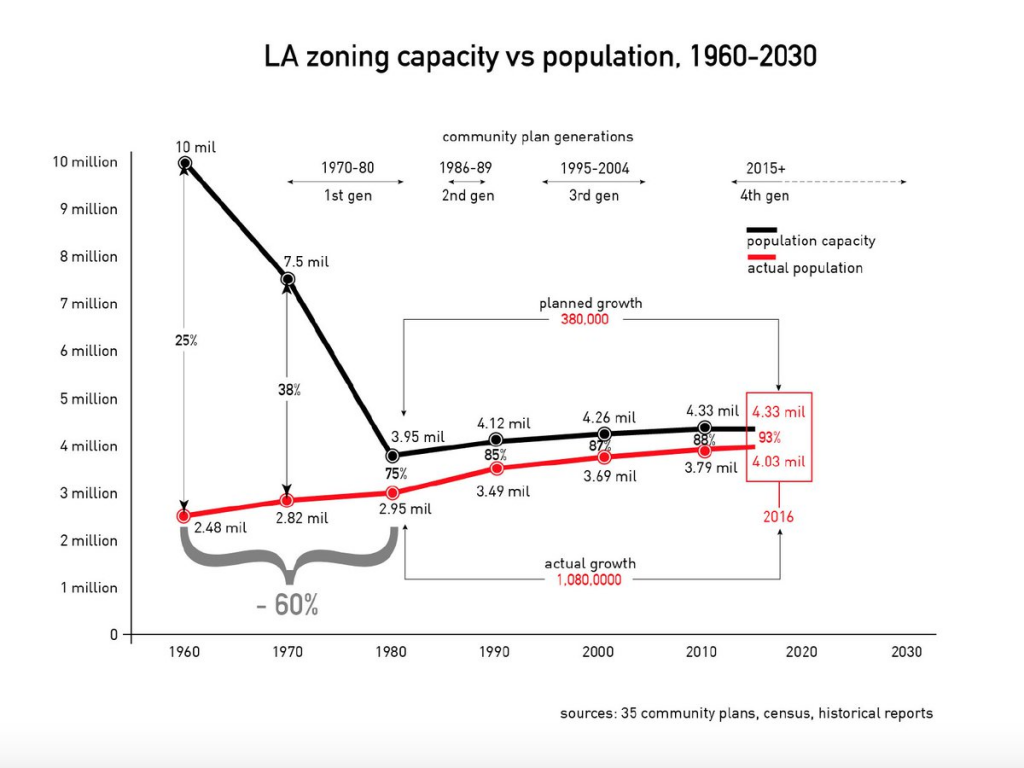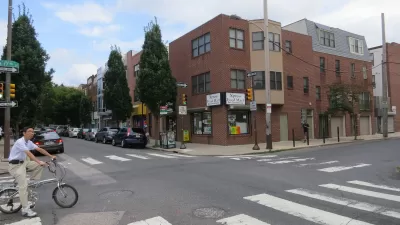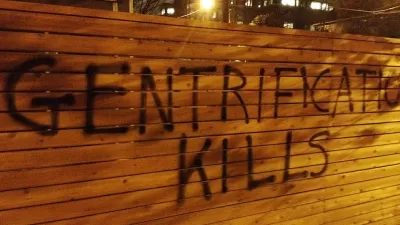New research helps explain why urban housing prices are escalating and how communities can increase affordability. It emphasizes the need to upzone sufficient urban land to create a large competitive market for parcels ready for infill development.

A new study by UCLA Professor Shane Phillips, Building Up the "Zoning Buffer": Using Broad Upzones to Increase Housing Capacity Without Increasing Land Values, emphasizes the need to maintain sufficient zoning buffer—the gap between the existing housing stock and the maximum number of homes allowed by current zoning—to increase housing affordability.
Phillips' research indicates that urban housing prices have risen because cities have downzoned, reducing the supply and driving up the price of parcels suitable for infill. For example, in 1960 Los Angeles had the zoning capacity to grow its housing stock by 300 percent; by 1980, this had fallen to 34 percent, declining to just 7 percent by 2016, as illustrated below. Downzoning did not stop population or employment growth, but it did reduce opportunities for additional housing. Over time, this shortage created our present-day housing crisis.

To combat this, many cities are upzoning to allow higher-density housing, usually in targeted locations such as along arterials or near transit stations. While this strategy may increase housing production in those areas, it can lead to higher land prices that erode the affordability of new homes. This study examines how the zoning buffer affects land values and the production and affordability of housing.
When zoning buffers are small, land with redevelopment potential remains scarce, and small-scale upzoning will cause land value increases that are largely captured by incumbent property owners. Larger-scale upzoning can create a large zoning buffer, reducing the scarcity of land with redevelopment potential, so property owners lack the leverage to demand more from a developer than a typical homebuyer. This allows developers to replace single-family houses with multiplexes, townhouses, and other types of multifamily housing, resulting in more moderately-priced development and lower housing prices.
Based on this analysis, Phillips argues that local or regional housing affordability can only be achieved through “broad upzoning,” defined as significant density increases on 25% to 50% of land in an area.
This study contributes to our understanding of why urban housing prices are escalating and how communities can increase affordability. It emphasizes the importance of scale—the need to upzone sufficient urban land—to create a large competitive market for parcels ready for moderately-priced infill development.

Planetizen Federal Action Tracker
A weekly monitor of how Trump’s orders and actions are impacting planners and planning in America.

Congressman Proposes Bill to Rename DC Metro “Trump Train”
The Make Autorail Great Again Act would withhold federal funding to the system until the Washington Metropolitan Area Transit Authority (WMATA), rebrands as the Washington Metropolitan Authority for Greater Access (WMAGA).

The Simple Legislative Tool Transforming Vacant Downtowns
In California, Michigan and Georgia, an easy win is bringing dollars — and delight — back to city centers.

The States Losing Rural Delivery Rooms at an Alarming Pace
In some states, as few as 9% of rural hospitals still deliver babies. As a result, rising pre-term births, no adequate pre-term care and "harrowing" close calls are a growing reality.

The Small South Asian Republic Going all in on EVs
Thanks to one simple policy change less than five years ago, 65% of new cars in this Himalayan country are now electric.

DC Backpedals on Bike Lane Protection, Swaps Barriers for Paint
Citing aesthetic concerns, the city is removing the concrete barriers and flexposts that once separated Arizona Avenue cyclists from motor vehicles.
Urban Design for Planners 1: Software Tools
This six-course series explores essential urban design concepts using open source software and equips planners with the tools they need to participate fully in the urban design process.
Planning for Universal Design
Learn the tools for implementing Universal Design in planning regulations.
Smith Gee Studio
City of Charlotte
City of Camden Redevelopment Agency
City of Astoria
Transportation Research & Education Center (TREC) at Portland State University
US High Speed Rail Association
City of Camden Redevelopment Agency
Municipality of Princeton (NJ)




























